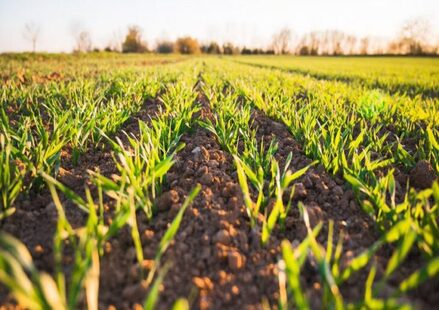
When it comes to filing income tax in India, one of the most misunderstood aspects is the treatment of agricultural income. Many believe that all forms of income from farming are completely tax-free, but there are nuances, conditions, and integration rules that come into play—especially for individuals earning both agricultural and non-agricultural income.
In this blog, we’ll break down everything you need to know about the Taxability of Agriculture Income, how it’s calculated, when it’s exempt, and where financial services in Surat like Finaccle Advisory Surat can step in to simplify your tax planning.
What Qualifies as Agricultural Income?
As per Section 2(1A) of the Income Tax Act, agricultural income refers to income derived from land located in India and used for agricultural purposes. But what exactly falls under this?
Examples of Agricultural Income:
- Income from cultivating crops like wheat, rice, vegetables, and fruits.
- Rent or revenue from agricultural land.
- Income from a farmhouse attached to agricultural land.
- Income from processing agricultural produce to make it saleable (like husking paddy).
Activities That Do Not Qualify:
- Income from poultry farming.
- Dairy farming income.
- Income from cutting and selling timber.
- Any processing beyond basic operations.
These are not considered agricultural income and are fully taxable under regular income tax laws.
Is Agricultural Income Taxable in India?
Here’s where it gets interesting.
✅ Agricultural income is exempt from income tax under Section 10(1) of the Income Tax Act.
❌ But this exemption isn’t absolute in all situations.
If your agricultural income exceeds ₹5,000 in a financial year and your total income (including non-agricultural income) exceeds the basic exemption limit (₹2.5 lakh for individuals under 60), then the partial integration method comes into play.
Conditions for Exemption on Agricultural Income
For your agricultural income to remain exempt:
- The income must be from land located in India.
- The land must be used for agricultural operations.
- The income must be agriculturally derived (not industrial or commercial).
- Income from plantations (tea, coffee, rubber) is partially agricultural and partially business—different rules apply.
If these conditions are met, you’re eligible for exemption on agricultural income.
Partial Integration of Agricultural Income with Non-Agricultural Income
This concept confuses many taxpayers. Let’s simplify it.
When Does It Apply?
Partial integration is applicable only when:
- Agricultural income > ₹5,000
- Non-agricultural income exceeds the basic exemption limit
Why Does It Exist?
It prevents taxpayers from misusing the exemption to evade taxes by inflating agricultural income. This rule essentially pushes your non-agricultural income into a higher slab without taxing the agricultural income directly.
How Is It Calculated?
Let’s say:
- Agricultural income = ₹2,00,000
- Non-agricultural income = ₹5,00,000
Here’s a simplified 3-step calculation:
- Step 1: Add both incomes (₹5,00,000 + ₹2,00,000 = ₹7,00,000) → Calculate tax on ₹7,00,000
- Step 2: Add basic exemption + agri income (₹2.5L + ₹2L = ₹4.5L) → Calculate tax on ₹4.5L
- Step 3: Final tax liability = Tax from Step 1 – Tax from Step 2
So, agricultural income doesn’t get taxed, but it affects your slab rate.
Important Provisions Under Indian Income Tax Law
- Section 10(1): Provides full exemption for agricultural income under certain conditions.
- Rule 7B: Deals with income from tea, coffee, or rubber plantations.
- Section 2(1A): Defines agricultural income and its components.
- Form ITR-2 or ITR-3: Required if you’re reporting agricultural income over ₹5,000.
Knowing these rules is crucial when you’re combining business income, salary, and agricultural revenue.
Tax Planning for Farmers and Landowners
Whether you’re a full-time farmer or earning passive income from leased agricultural land, strategic tax planning is essential. You can:
- Invest in tax-saving instruments for non-agricultural income.
- Maintain records of expenses and revenues.
- Plan income reporting to avoid triggering the partial integration clause.
This is where consulting professionals becomes extremely valuable.
Common Misconceptions About Agricultural Income Tax
❌ Myth 1: All agricultural income is 100% tax-free
✅ Truth: Only genuine agricultural income is exempt under specified conditions.
❌ Myth 2: No documentation is required
✅ Truth: You must maintain land records, crop details, sale receipts, etc., for verification.
❌ Myth 3: Income from nursery or selling farm produce in urban areas is exempt
✅ Truth: Only income generated directly through agricultural activity on Indian land is exempt.
Role of Financial Advisors in Tax Planning
When tax rules get complicated—like with partial integration or plantation income—a trusted advisor can save you time, effort, and even potential penalties.
Why Consult Professionals?
- Navigate complex exemptions and deductions
- Handle ITR filing with agricultural and non-agricultural income
- Avoid scrutiny or errors in self-declared income
- Plan your income to reduce tax liability legally
Financial Services in Surat by Finaccle Advisory Surat
If you’re looking for professional help, Finaccle Advisory Surat offers end-to-end financial services in Surat, including:
- Tax consultancy for salaried and self-employed individuals
- Income tax filing assistance
- Guidance on agriculture and land-based income
- Business and investment planning
Their team ensures your returns are not just compliant but also optimized for tax efficiency.
Conclusion
To sum it up, agricultural income can be exempt, but not always. Knowing when partial integration applies and how to report agricultural income properly is essential—especially for those with multiple income sources.
Whether you’re a farmer, investor, or landowner, staying informed about the taxability of agriculture income helps you stay ahead. And when in doubt, don’t hesitate to consult experienced financial professionals like those at Finaccle Advisory Surat, known for offering dependable financial services in Surat.

